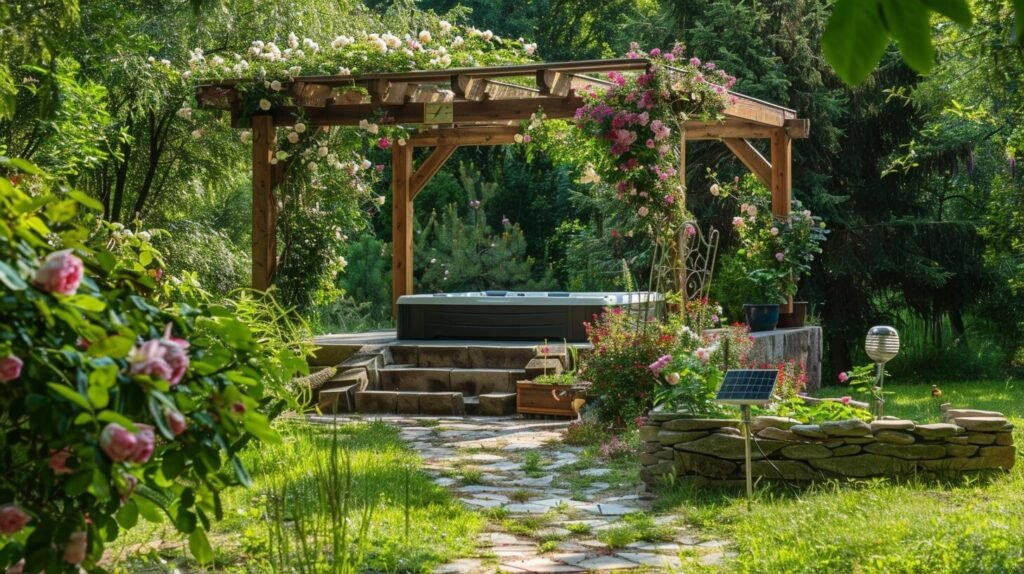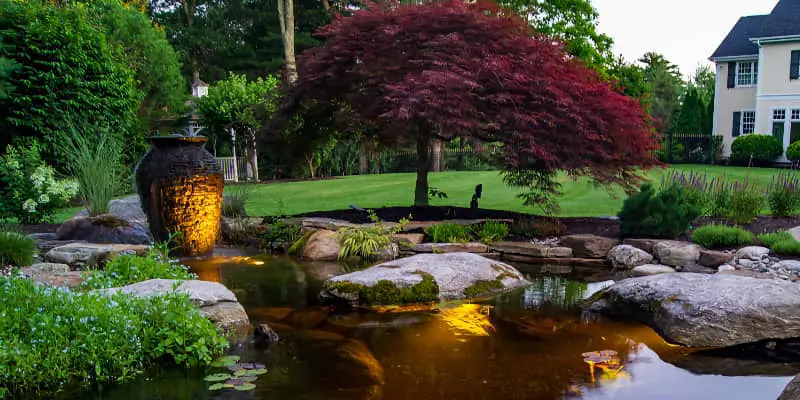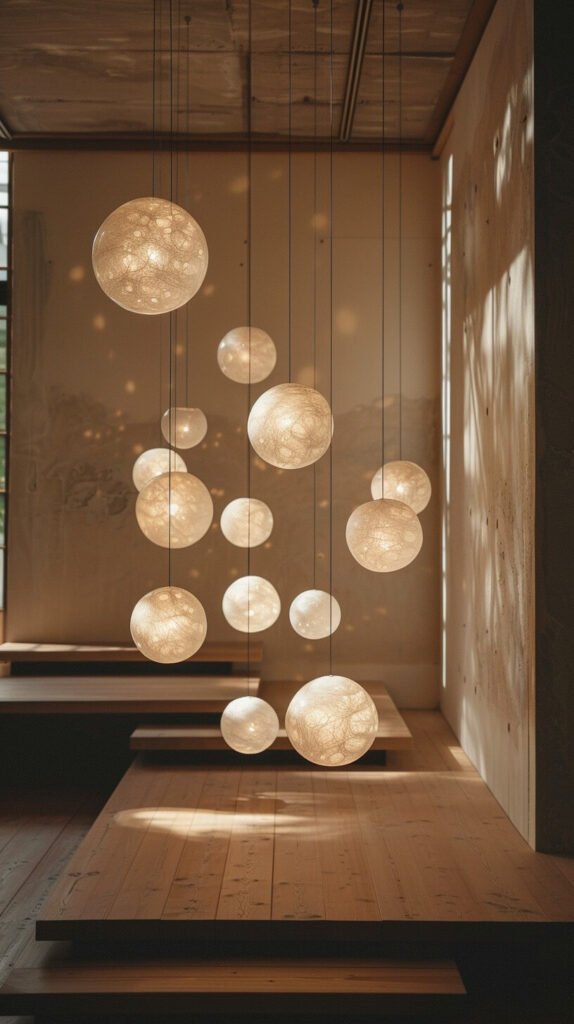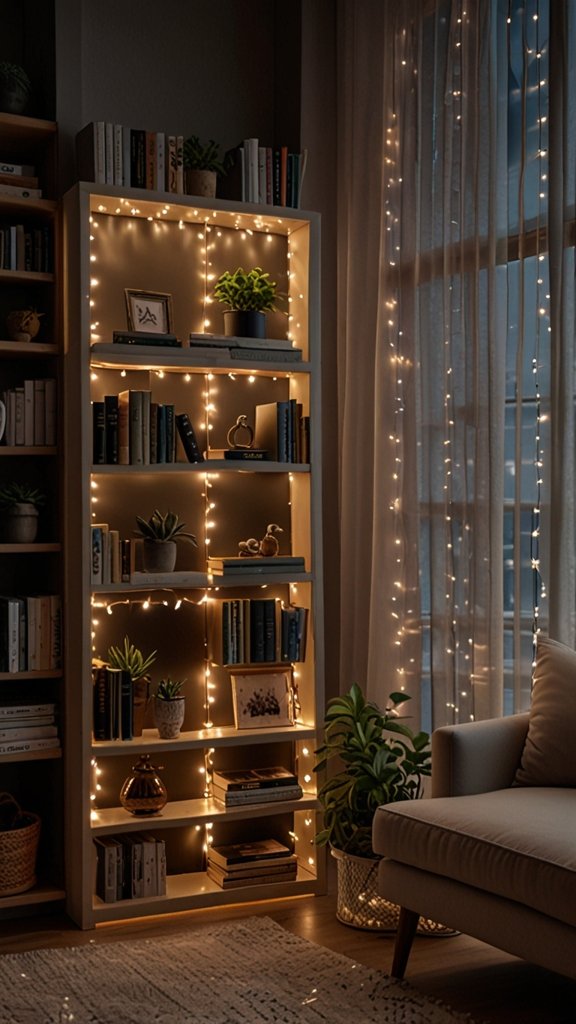Transforming your outdoor space into a nighttime retreat can be done in a lot of ways, As a passionate garden designer, I’ve spent years testing and reviewing different creative lighting techniques and am happy to share with you how to create an outdoor optical Illusions with solar lights

What are the Simple Ways to Create Outdoor Optical Illusions with Solar Lights?
To create an optical illusion with solar lights lies in understanding how our brains interpret lights and shadows.
Did you know that our visual cortex processes images within 13 milliseconds?
A well-planned solar light installations can create such powerful illusions!
The Science Behind Outdoor Optical Illusions
Our perception of depth, movement, and space can be cleverly manipulated using strategic light placement.
Solar-powered garden lights are perfect for creating these effects because they offer:
- Flexible placement without wiring constraints
- Sustainable, energy-efficient operation
- Automatic activation at dusk
- Various brightness levels and color temperatures
- Weather-resistant durability
Essential Equipment for Creating Garden Light Illusions
Before diving into the different ways and specific designs, we have to cover the essential equipment to have before starting your design:
- Path Lights: Perfect for creating floating walkway effects
- Spotlights: Essential for uplighting and shadow play
- String Lights: Ideal for geometric patterns and tunnel effects
- Color-Changing LEDs: Great for dynamic illusions
- Solar Light Stakes: Versatile for various mounting options
Recommended Light Specifications
- Minimum 100 lumens for primary effects
- 2700K-4000K color temperature range
- IP65 or higher waterproof rating
- 8-10 hours runtime capacity
- Motion sensors for interactive displays
10 Breathtaking Optical Illusion Design Ideas
1. Floating Pathway Illusion
Mount solar lights slightly above ground level to create an ethereal floating pathway.
Install them behind small shrubs or rocks to hide the mounting hardware.
The effect is particularly stunning over water features or dark ground cover.
Use warm white lights (2700K) for a mystical glow and space them 2-3 feet apart for optimal effect.
2. Infinity Tunnel Effect
Position your solar string lights in a tunnel formation, gradually decreasing the spacing between lights.
This creates an infinity effect that appears to stretch endlessly into the darkness.
Create an arch structure using garden hoops or trellises, and wrap solar LED strings in a spiral pattern, decreasing density toward the end.

3. Levitating Garden Features
Use uplighting techniques with carefully positioned spotlights to eliminate shadows beneath garden ornaments, creating the illusion that they’re floating in space.
Place 2-3 solar spotlights around the base of sculptures or decorative elements, angling them at 45 degrees for maximum shadow elimination.
4. Water Mirror Illusion
To transform water features into mirrors, surround them with concealed solar lights.
Positioning the lights at water level, hidden behind rocks or plants, to create a glowing reflection that doubles the visual impact of your garden features.
This works exceptionally well with floating solar orbs or underwater lights.
5. Disappearing Fence Trick
Create the illusion of an endless garden by gradually reducing the brightness of solar lights along fence lines.
Start with brighter lights (200+ lumens) near viewing areas and progressively use dimmer lights (50-100 lumens) as the fence extends away.
This creates depth perception that makes boundaries seem to fade into infinity.
6. Forest Depth Illusion
Layer solar spotlights at different heights and distances throughout garden foliage.
Brighter lights are placed in the foreground, and progressively dimmer ones are placed in the background.
Use color-changing lights sparingly in the mid-ground to create depth.
This creates an enchanted forest effect that appears much deeper than the actual space.
7. Floating Light Orbs Display

Suspend solar-powered globe lights at varying heights using transparent fishing lines.
Position them among trees or over garden beds, ensuring the mounting hardware remains invisible.
Use different sizes (4-12 inches in diameter) and vary the heights between 4-8 feet to create a magical floating light display.
8. Shadow Art Installation
Create intentional shadow patterns using solar spotlights positioned behind sculptural elements or carefully pruned plants.
Angle lights at 30-45 degrees to cast dramatic shadows on walls or ground surfaces.
Layer multiple lights to create overlapping patterns that change throughout the evening as the lights activate.
9. Geometric Light Matrix
Install a grid of solar stake lights in a precise geometric pattern, such as a diamond or hexagonal formation.
Space the lights (typically 2-4 feet apart) and use identical models for consistency.
The regular pattern creates an optical illusion of movement when viewed from different angles, especially when walking past the display.
10. Color Cascade Effect
To create this effect Set up a series of color-changing solar lights in a vertical arrangement, programming them to shift colors in a cascading sequence.
Position the lights behind water features or along garden structures, spacing them 12-18 inches apart.
The gradual color transition creates an illusion of flowing light that appears wonderful.
Tips for Maximum Impact:
- Ensure all mounting hardware and solar panels are concealed from primary viewing angles
- Test the effects during different weather conditions and moon phases
- Consider seasonal foliage changes when planning permanent installations
- Use timers to coordinate activation sequences for dynamic displays
- Incorporate reflective surfaces (mirrors, metallic orbs, or water features) to amplify effects
Best Viewing Conditions:
- Primary illusions are most effective 30-45 minutes after sunset
- Moonless nights provide optimal contrast for light-based effects
- Light rain or mist can enhance certain illusions by creating natural light diffusion
- Consider creating designated viewing spots with seating areas
- Some effects work best when viewed while walking rather than from static positions
Remember to maintain appropriate light levels for safety while creating these illusions.
Always ensure pathways and steps remain visible, and avoid configurations that might disorient visitors or create hazardous conditions.

Installation and Planning Tips
Success in creating outdoor optical illusions depends heavily on proper planning:
- Sun Exposure Analysis
- Map your garden’s sunny areas
- Track seasonal sun patterns
- Position solar panels for maximum charging
- Viewing Angles
- Identify primary viewing locations
- Create clear sightlines
- Consider multiple perspective points
- Safety Considerations
- Mark actual pathways clearly
- Secure all mounting hardware
- Ensure proper drainage around installations
Maintenance and Optimization
Regular Maintenance Schedule
- Clean solar panels monthly
- Check battery performance quarterly
- Adjust angles seasonally
- Replace degraded components promptly
- Update lighting patterns for seasonal changes
Troubleshooting Common Issues
- Dim Lights
- Clean solar panels
- Check for shade coverage
- Verify battery connections
- Consider battery replacement
- Inconsistent Performance
- Adjust solar panel angles
- Clear debris from sensors
- Check for water damage
- Verify automatic timer settings
Frequently Asked Questions
How many solar lights do I need for basic illusions?
For basic illusions start with at least 12-15 lights for effects. complex illusions might require 30-50 lights depending on your space and desired impact.
Do weather conditions affect the illusions?
weather conditions do affect the illusions, fog and rain can enhance the effects! However, ensure your lights are properly rated for outdoor use (IP65 or higher).
Can I create illusions in a small garden?
Absolutely! Smaller spaces often create more impactful illusions due to controlled viewing angles and concentrated light patterns.
How long do solar light illusions last?
Solar light illusions can last 3-5 years, With proper maintenance and solar light installation. Depending on weather exposure Individual components may need replacement every 1-2 years.
Expert Tips for Advanced Effects
- Layer Your Lighting
- Combine different light types
- Create depth with varied brightness levels
- Use contrasting colors strategically
- Seasonal Adaptations
- Adjust for varying daylight hours
- Incorporate seasonal themes
- Modify patterns for winter/summer
- Interactive Elements
- Add motion sensors
- Create color-changing sequences
- Include sound-responsive features
Conclusion
Creating outdoor optical illusions with solar lights is an exciting way to transform your garden into a nighttime destination.
Start simple and gradually expand your display as you become more comfortable with the techniques.
With proper planning and maintenance, you’ll create stunning visual effects that amaze visitors while staying environmentally conscious.
Start your journey into garden illusion design today, documenting your progress in every step you’ll be amazed at how your space transforms!
Have questions about creating your garden light illusions? Drop them in the comments below!



